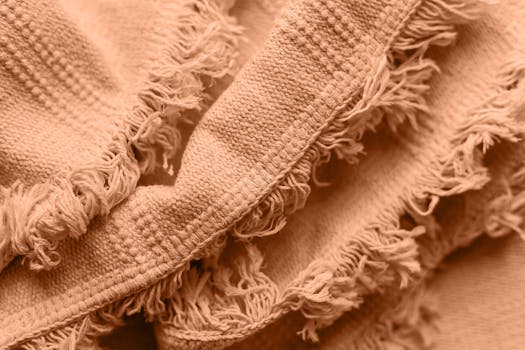Perbandingan Biaya Atap Spandek Polymethyl Methacrylate dengan Material Lain:Dalam industri konstruksi, pemilihan material atap yang tepat sangat penting untuk memastikan kekuatan, daya tahan, dan efisiensi biaya dari sebuah bangunan. Salah satu material yang sering digunakan adalah atap spandek polymethyl methacrylate (PMMA). Namun, sebelum memutuskan menggunakan PMMA, penting untuk membandingkan biaya material ini dengan material atap lain yang tersedia di pasaran. Dalam artikel ini, akan dibahas perbandingan biaya atap spandek PMMA dengan material lain yang umum digunakan dalam industri konstruksi.
Polymethyl Methacrylate (PMMA) roofing is gaining popularity as a cost-effective and durable alternative to traditional roofing materials. In this article, we will explore the advantages of PMMA roofing compared to other materials.One of the main advantages of PMMA roofing is its affordability. Compared to materials like metal or clay tiles, PMMA roofing is significantly cheaper. This makes it an attractive option for homeowners or businesses on a tight budget. Additionally, the installation costs for PMMA roofing are also lower, as it is a lightweight material that is easy to handle and install.Another advantage of PMMA roofing is its durability. PMMA is a highly durable material that can withstand extreme weather conditions, including heavy rain, strong winds, and even hailstorms. Unlike traditional roofing materials that may crack or break under pressure, PMMA roofing is resistant to impact and can last for many years without needing repairs or replacements.PMMA roofing is also known for its versatility. It can be molded into various shapes and sizes, making it suitable for different architectural designs. Whether you have a flat roof or a pitched roof, PMMA roofing can be customized to fit your specific needs. This flexibility in design allows for more creative freedom when it comes to constructing or renovating a building.In addition to its affordability, durability, and versatility, PMMA roofing also offers excellent insulation properties. It has a high thermal resistance, which means it can effectively regulate the temperature inside a building. This can lead to significant energy savings, as less energy is required to heat or cool the interior. By reducing the reliance on heating or cooling systems, PMMA roofing can help lower utility bills and contribute to a more sustainable environment.Furthermore, PMMA roofing requires minimal maintenance. Unlike traditional roofing materials that may require regular cleaning, painting, or sealing, PMMA roofing is virtually maintenance-free. It does not fade or discolor over time, and it is resistant to algae or moss growth. This means that once installed, you can enjoy a hassle-free roofing solution for many years to come.Lastly, PMMA roofing is an environmentally friendly choice. It is a recyclable material, which means it can be reused or repurposed at the end of its lifespan. Additionally, the production process of PMMA roofing involves fewer harmful emissions compared to other materials
. By choosing PMMA roofing, you are not only investing in a cost-effective and durable solution but also contributing to a greener future.In conclusion, PMMA roofing offers several advantages compared to other materials. Its affordability, durability, versatility, insulation properties, low maintenance requirements, and environmental friendliness make it an excellent choice for both residential and commercial buildings. Whether you are looking to save money, enhance the aesthetics of your property, or reduce your carbon footprint, PMMA roofing is a reliable and sustainable option. Consider PMMA roofing for your next roofing project and enjoy the benefits it has to offer.
Advantages of Polymethyl Methacrylate (PMMA) Roofing Compared to Other Materials

Polymethyl Methacrylate (PMMA) roofing is gaining popularity as a cost-effective and durable alternative to traditional roofing materials. In this article, we will explore the advantages of PMMA roofing compared to other materials.One of the main advantages of PMMA roofing is its affordability. Compared to materials like metal or clay tiles, PMMA roofing is significantly cheaper. This makes it an attractive option for homeowners or businesses on a tight budget. Additionally, the installation costs for PMMA roofing are also lower, as it is a lightweight material that is easy to handle and install.Another advantage of PMMA roofing is its durability. PMMA is a highly durable material that can withstand extreme weather conditions, including heavy rain, strong winds, and even hailstorms. Unlike traditional roofing materials that may crack or break under pressure, PMMA roofing is resistant to impact and can last for many years without needing repairs or replacements.PMMA roofing is also known for its versatility. It can be molded into various shapes and sizes, making it suitable for different architectural designs. Whether you have a flat roof or a pitched roof, PMMA roofing can be customized to fit your specific needs. This flexibility in design allows for more creative freedom when it comes to constructing or renovating a building.In addition to its affordability, durability, and versatility, PMMA roofing also offers excellent insulation properties. It has a high thermal resistance, which means it can effectively regulate the temperature inside a building. This can lead to significant energy savings, as less energy is required to heat or cool the interior. By reducing the reliance on heating or cooling systems, PMMA roofing can help lower utility bills and contribute to a more sustainable environment.Furthermore, PMMA roofing requires minimal maintenance. Unlike traditional roofing materials that may require regular cleaning, painting, or sealing, PMMA roofing is virtually maintenance-free. It does not fade or discolor over time, and it is resistant to algae or moss growth. This means that once installed, you can enjoy a hassle-free roofing solution for many years to come.Lastly, PMMA roofing is an environmentally friendly choice. It is a recyclable material, which means it can be reused or repurposed at the end of its lifespan. Additionally, the production process of PMMA roofing involves fewer harmful emissions compared to other materials
